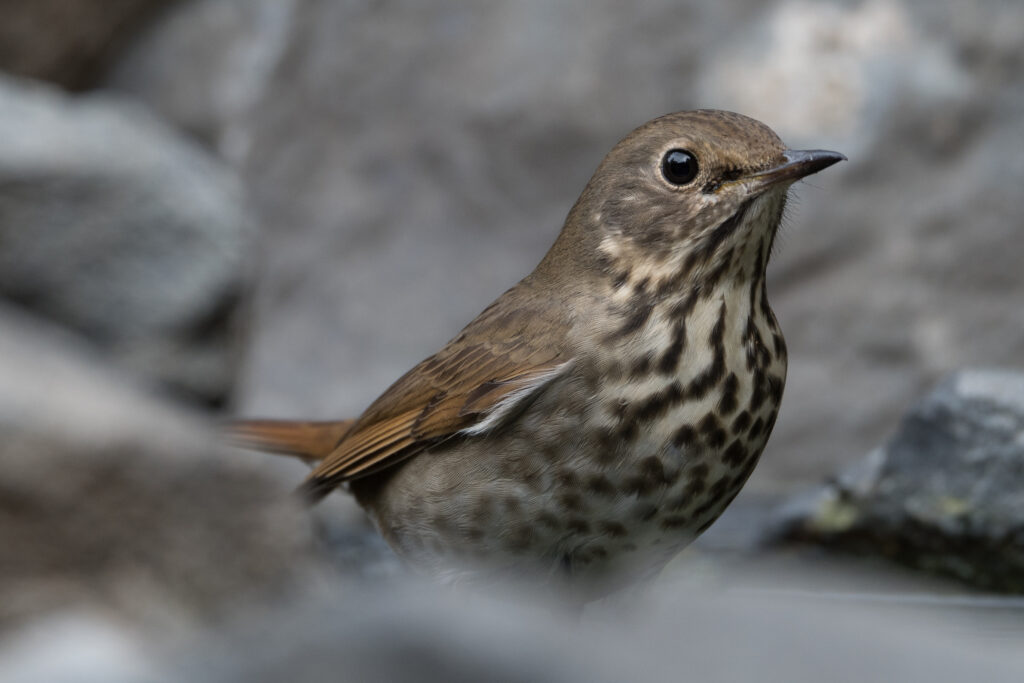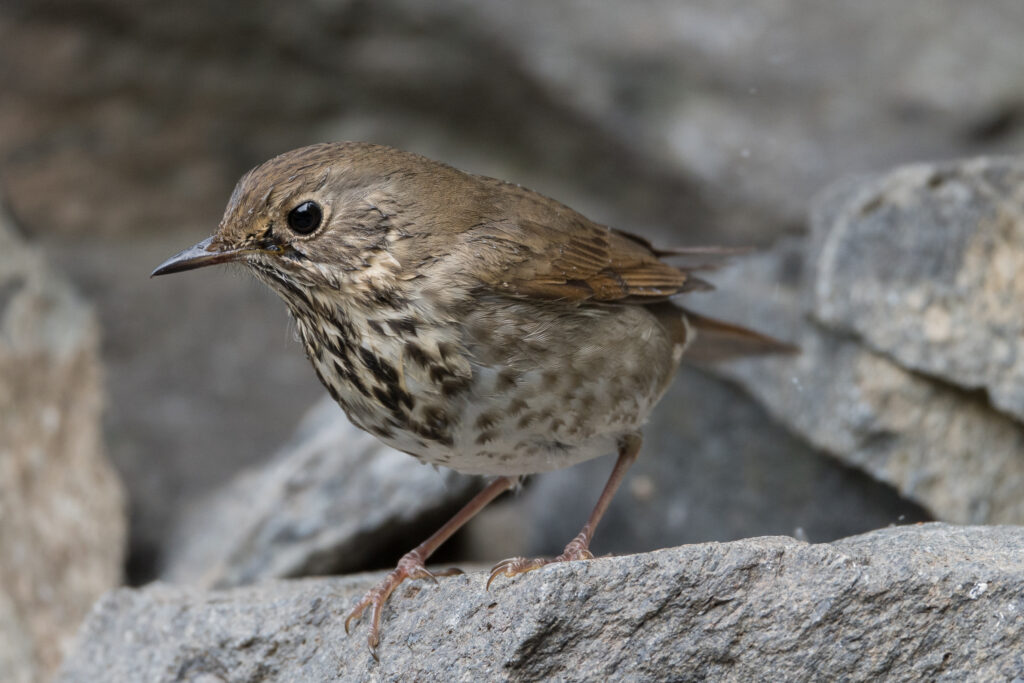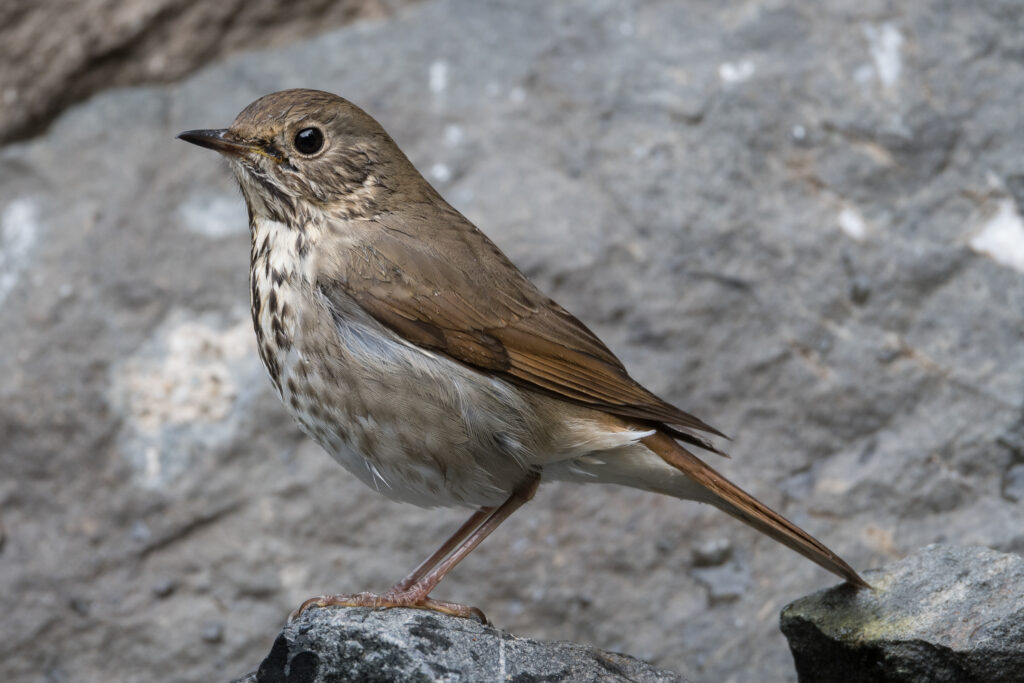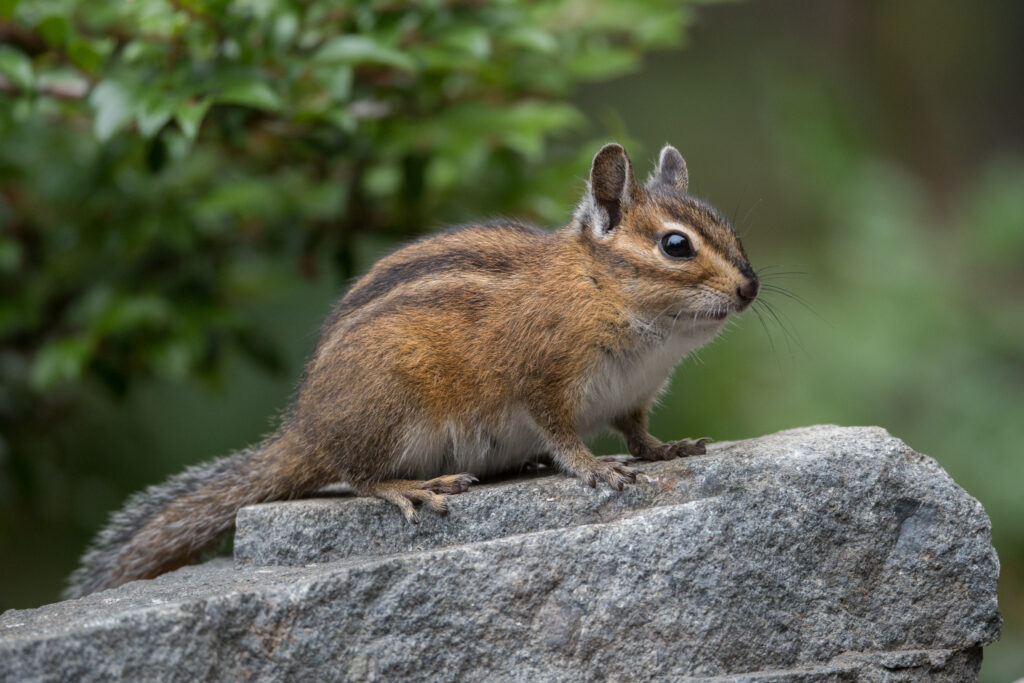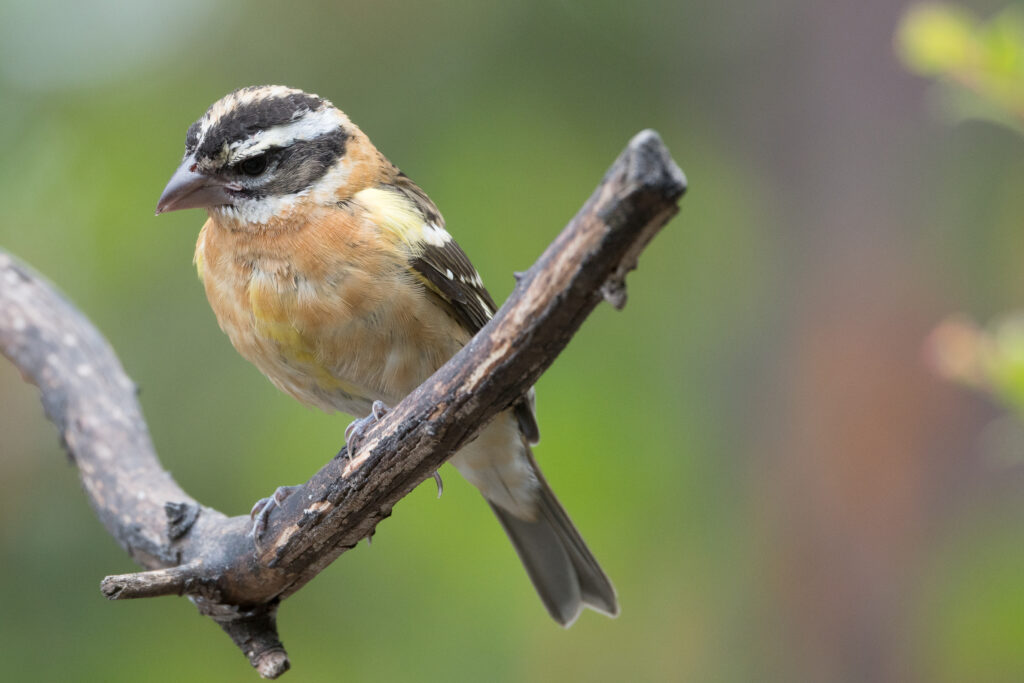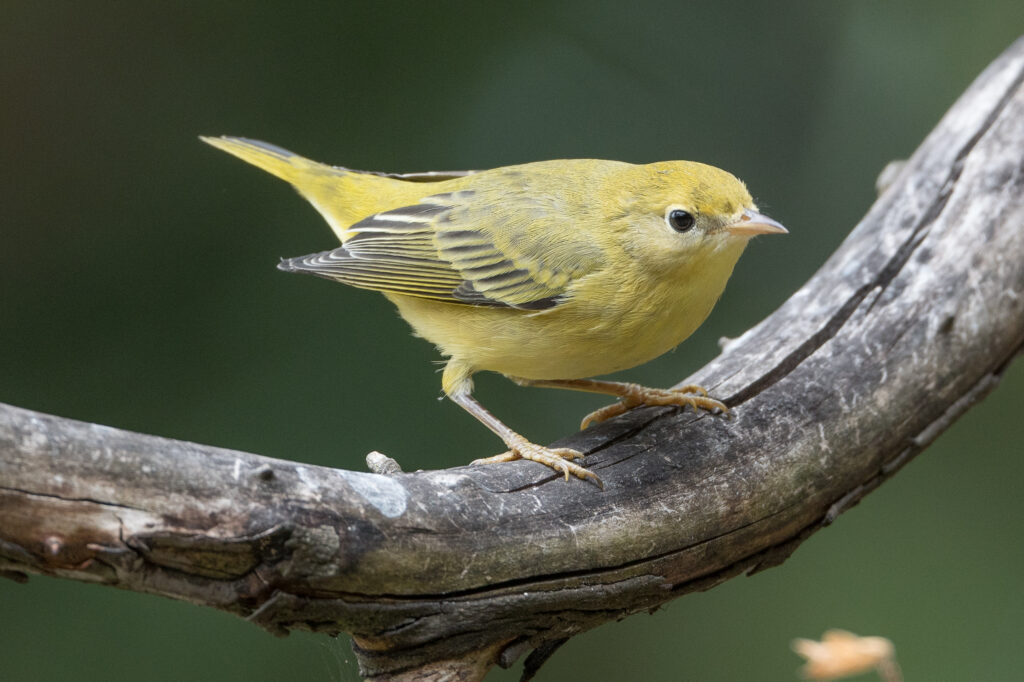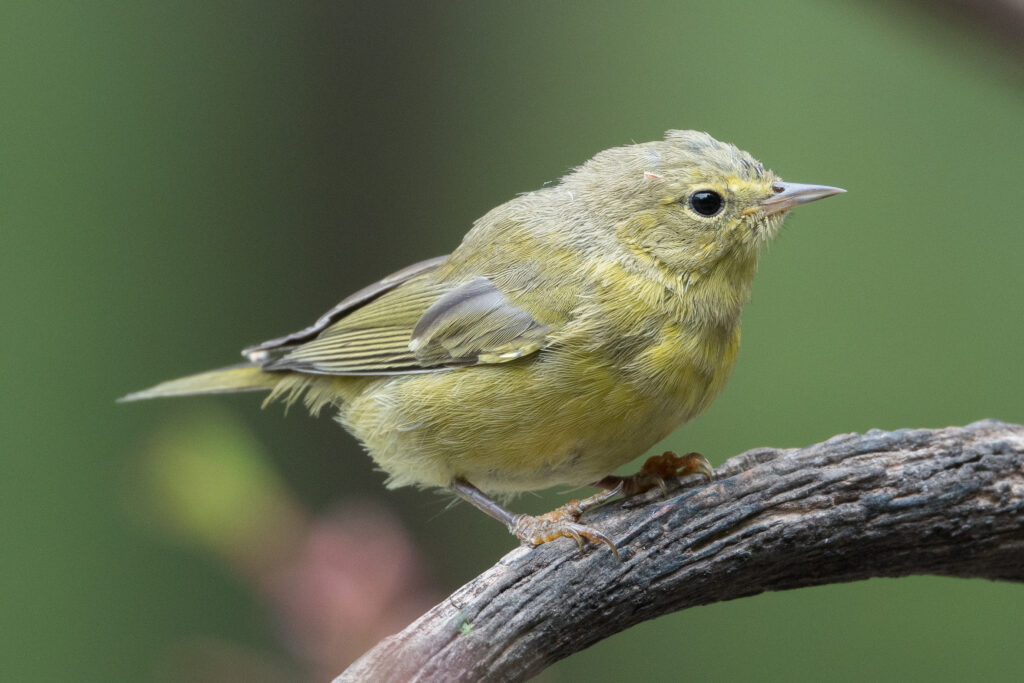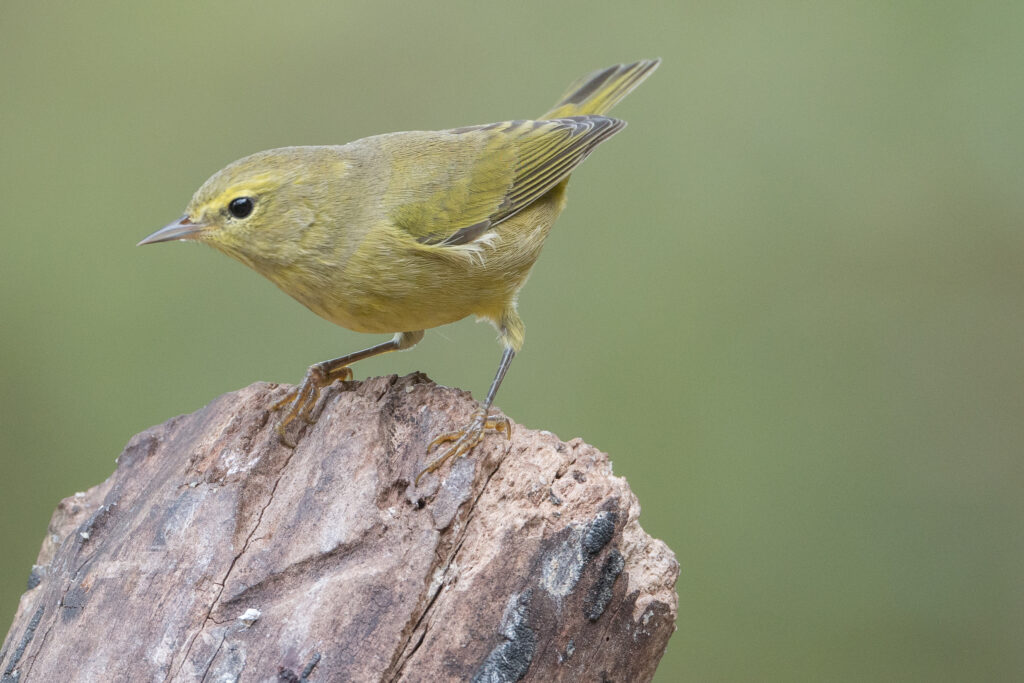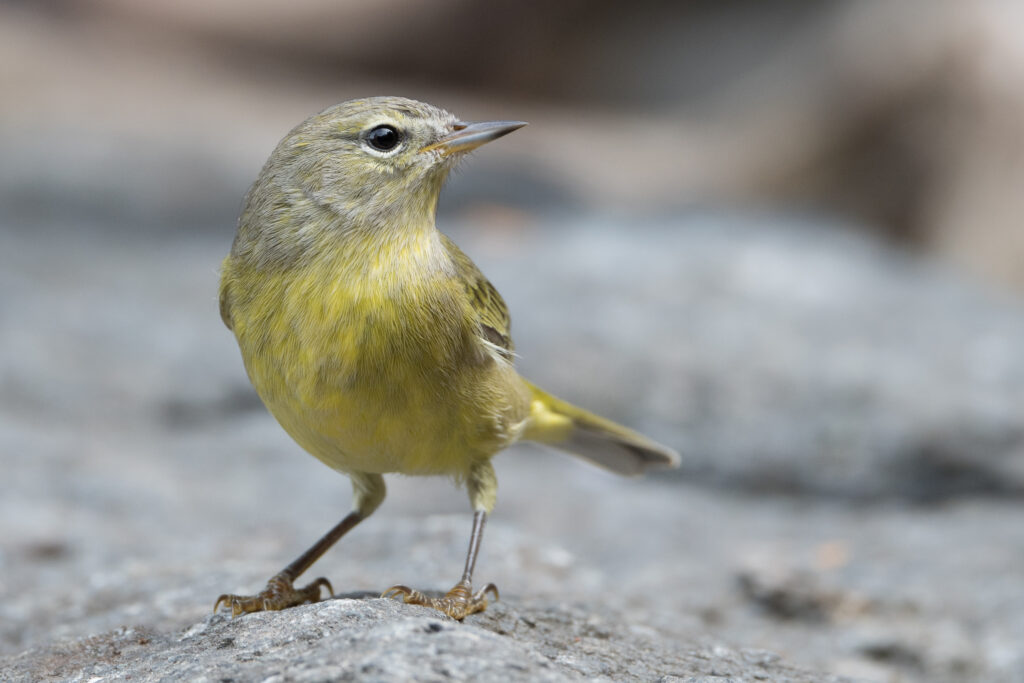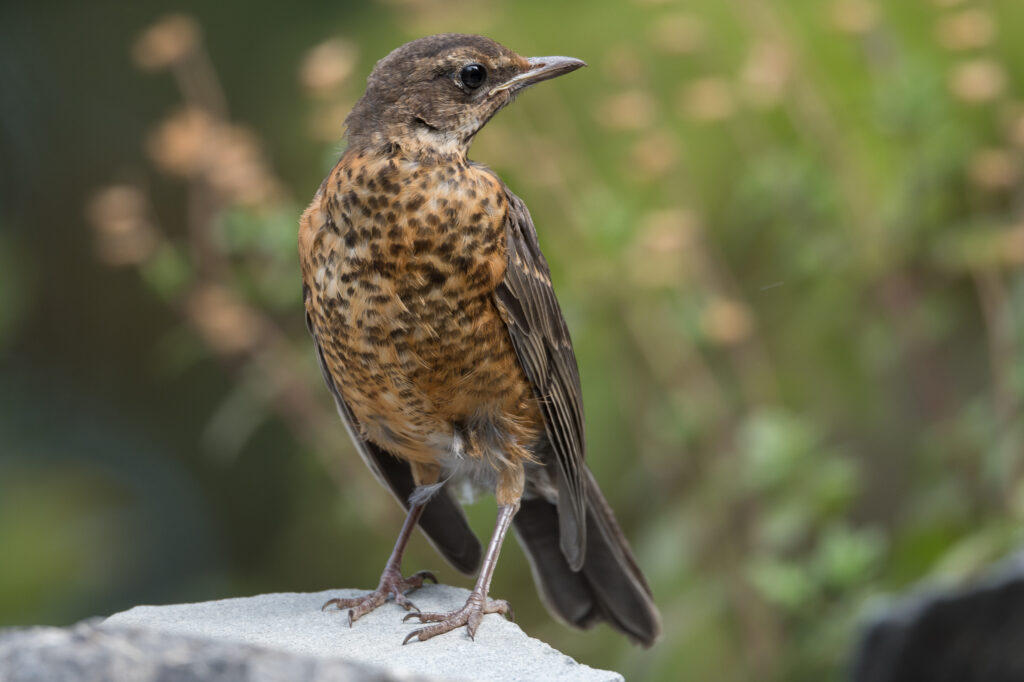On September 16, 2022, shortly after 7:30pm, I was in the kitchen and glanced outside. In the rapidly fading light I saw a bird crossing the ground between some bushes and our watercourse. My sense of curiosity was piqued because it seemed too late (in terms of darkness) for any of our local birds to be active and approaching the watercourse.
I was unable to see any distinguishing markings on the bird due to the darkness so I picked up my binoculars knowing they would give me better vision. There, at the bottom of the watercourse was a Hermit thrush!
The Hermit thrush is a fall migrant to our area and will spend the winter in the greater area. Interestingly, we have a bird very similar in appearance (the Swainson’s thrush) which is on an opposite schedule… it arrhves in the spring, spends the summers here and departs by the fall.
As I excitedly watched the thrush it was soon joined by yet another! I believe this is the first time I have ever seen two at the same time, perhaps a reference to its name. In a moment the two thrushes were joined by yet another! We now had three thrushes in or around our watercourse, and there wasn’t nearly enough light for photos!
Since I had seen the thrushes so late in the day I thought there was a chance they might spend the night in the immediate area and return to the yard or watercourse in the morning. I wasn’t able to go outside and monitor the watercourse the next morning, but periodic checking revealed no thrushes.
That afternoon (September 17), shortly after 3:30pm, I had a brief period to monitor the yard before meeting friends for an early dinner. I glanced out the kitchen window and saw a single American goldfinch in the watercourse and a few chickadees around the yard. I took my camera outside and noted the goldfinch had flown, but there, sitting on one of my staging sticks at the head of the watercourse was a Hermit thrush!
I quickly positioned my chair but when I looked back at the watercourse the thrush had gone. I sat quietly and a moment or two later the thrush reappeared and I was able to get several good photos, some of which are displayed below.
In processing the photos I realized the bird I photographed was a juvenile born this season and was probably on its first migration. I have no way of knowing if it was part of what was probably a family group I had observed the previous evening.
Aptly named for its retiring ways, the Hermit Thrush is a bird of dense forest understory and thicket that is often heard before it’s seen.
